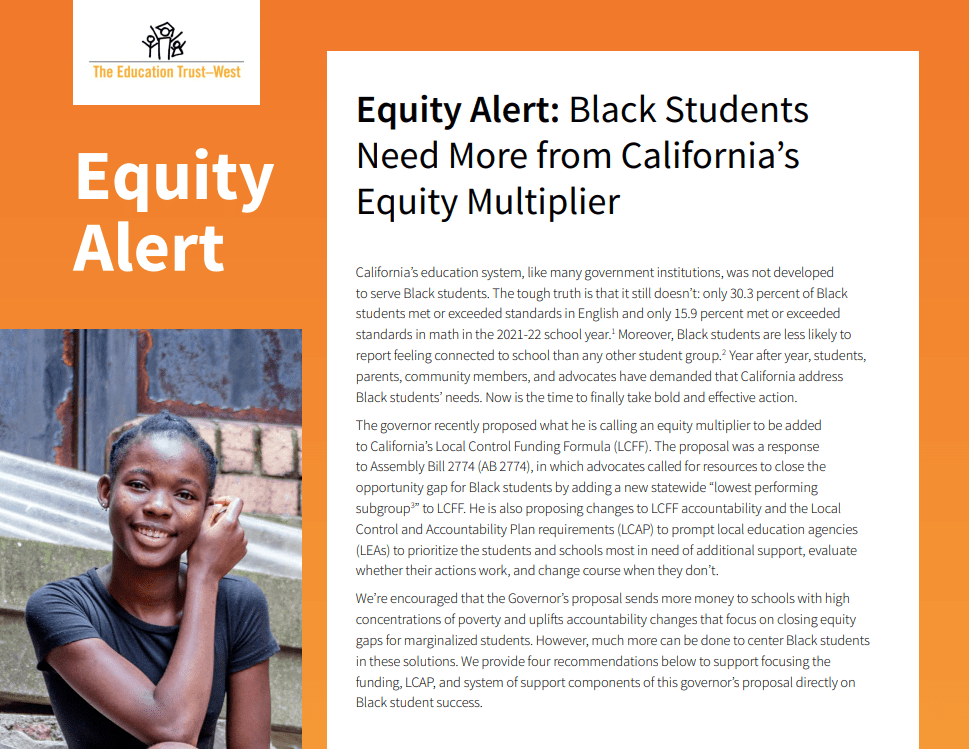California’s education system, like many government institutions, was not developed to serve Black students. The tough truth is that it still doesn’t: only 30.3 percent of Black students met or exceeded standards in English and only 15.9 percent met or exceeded standards in math in the 2021-22 school year. Moreover, Black students are less likely to report feeling connected to school than any other student group. Year after year, students, parents, community members, and advocates have demanded that California address Black students’ needs. Now is the time to finally take bold and effective action.
The governor recently proposed what he is calling an equity multiplier to be added to California’s Local Control Funding Formula (LCFF). The proposal was a response to Assembly Bill 2774, in which advocates called for resources to close the opportunity gap for Black students by adding a new statewide “lowest performing subgroup” to LCFF. He is also proposing changes to LCFF accountability and the Local Control and Accountability Plan (LCAP) requirements to prompt local education agencies to prioritize the students and schools most in need of additional support, evaluate whether their actions work, and change course when they don’t.
We’re encouraged that the governor’s proposal sends more money to schools with high concentrations of poverty and uplifts accountability changes that focus on closing equity gaps for marginalized students. However, much more can be done to center Black students in these solutions.
In the equity alert below, we provide four recommendations to support focusing the funding, LCAP, and System of Support components of this governor’s proposal directly on Black student success.

5 things advocates should know about California’s 2024-25 state budget proposal(s) and process
Each year, California state leaders spend months proposing and refining the state’s budget, making decisions about programs and resources that directly impact students, schools, and colleges.



